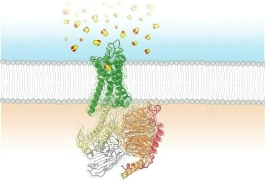The Chemistry of Pigments and How Scientists Prevent Color Degradation
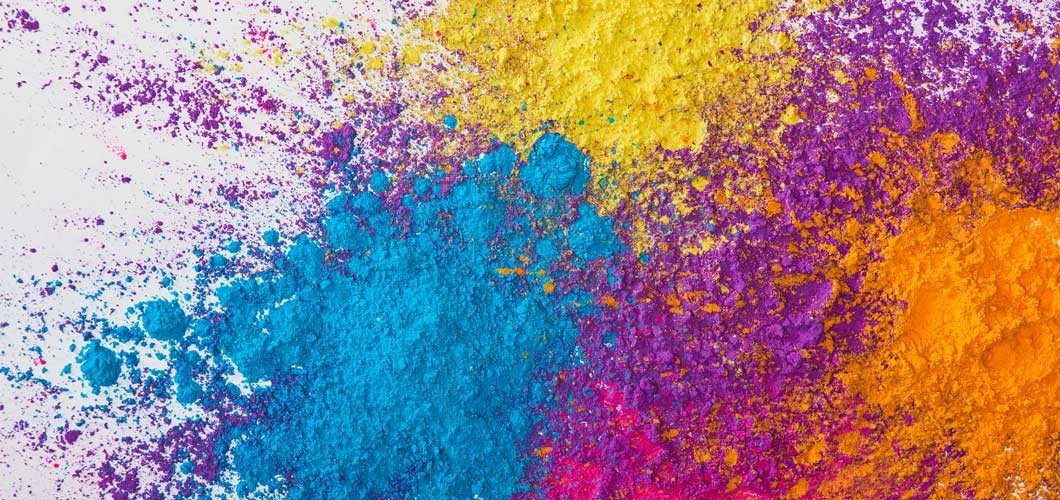
At the heart of every drop of paint, every thread of cloth, every bit of your brightly colored phone case is a pigment. Pigments are the compounds added to materials to give them color. This deceptively simple application has shaped our perception of the world via art, fashion, and even computer displays and medicine. Pigments are used in paints, inks, plastics, fabrics, cosmetics, and food.
Some of the earliest chemistry was to make and isolate pigments for paints, and pigment conservation is a focus for many modern researchers who identify and preserve artwork.
Get to know pigments
But what is a pigment, exactly? Pigments are brightly colored, insoluble powders (brightly colored liquids are called dyes). In most cases, the bright color is a result of the material absorbing light in the visible spectrum. In inorganic pigments, this absorption is the result of charge transfer between a metal (transition metals are really good at this); organic pigments tend to have conjugated double bonds that absorb visible wavelengths.
Pigments are mixed with binders to attach them to a substrate. The resulting suspension—a paint—is used to coat materials and impart color onto them. In industry, there are three pigment classes: absorption pigments (used in watercolor paints), metal effect pigments (used to create surface luster), and pearlescent pigments.
Pigments are found in nature, such as ochre (a blend of iron oxides and hydroxides) and indigo (C16H10N2O2). They can also be synthetic pigments such as mauve (an aniline derivative) or white lead. White lead, one of the earliest synthetic pigments, is made by treating sheets of lead with vinegar. They are often more robust than dyes, which dissolve in the material they are coloring. Pigments can keep their color for many centuries and withstand high heat, intense light, and exposure to weather or chemical agents.
Cataloging colors
Because of their prominence in art, pigments have an important place in history. The Forbes Pigment Collection, housed in the Straus Center for Conservation and Technical Studies at the Harvard Art Museums, catalogs and preserves more than 2,500 pigments. Its founder, Edward Forbes, started the collection by gathering pigment samples from his travels all over the world, including colors like mummy brown, made from ground-up mummies, and carmine red (C22H15AlCaO13), obtained from cochineal insects.
The Forbes Pigment Collection is often used as a reference library to standardize colors and identify pigment samples from artworks, which can confirm or disprove the piece’s origins. For instance, in 2007, a painting supposedly by Jackson Pollock was discovered to be a forgery when chemical analysis revealed the presence of pigments that weren’t available until decades after his death (Custer, 2007).
Furthermore, many artists had personal preferences and favored certain pigments over others. Thus, knowing which pigments were used, and whether they were in character for the artist or not, can help art historians determine an art piece’s authenticity.
The Forbes Pigment Collection, which boasts more than 60 natural samples, also highlights one of the challenges with natural pigments. Natural pigments were gathered from nature, for example, ore deposits, minerals, and flowers. But tiny shifts in chemical composition or particle growth cause specific shades to vary significantly due to impurities present in the sample.
Analyzing and understanding the pigments used in paintings is also vital to artwork restoration and preservation. Many pigments chemically react with ambient light and humidity, as well as harsher substances like soot and smoke from cigars or fireplaces. Pigments may oxidize, dissolve in acid or water, undergo phase transitions, react with the binders in the paint, or degrade.
For example, eosin Y was a pigment historically favored by many artists, most notably Vincent van Gogh. Initially a vibrant red, exposure to light gradually turns eosin white as UV radiation excites the pigment molecules and leads to the production of OH radicals. This breaks down the structure of the pigment, and eventually turns it white. Knowing such information allows art historians to better conserve art.
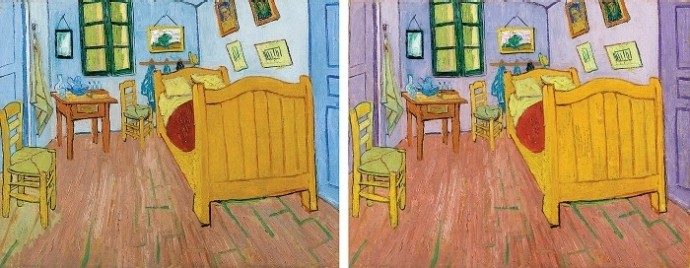
Eosin Y undegraded
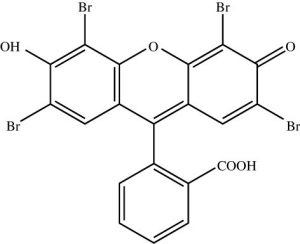
Eosin pigment degradations
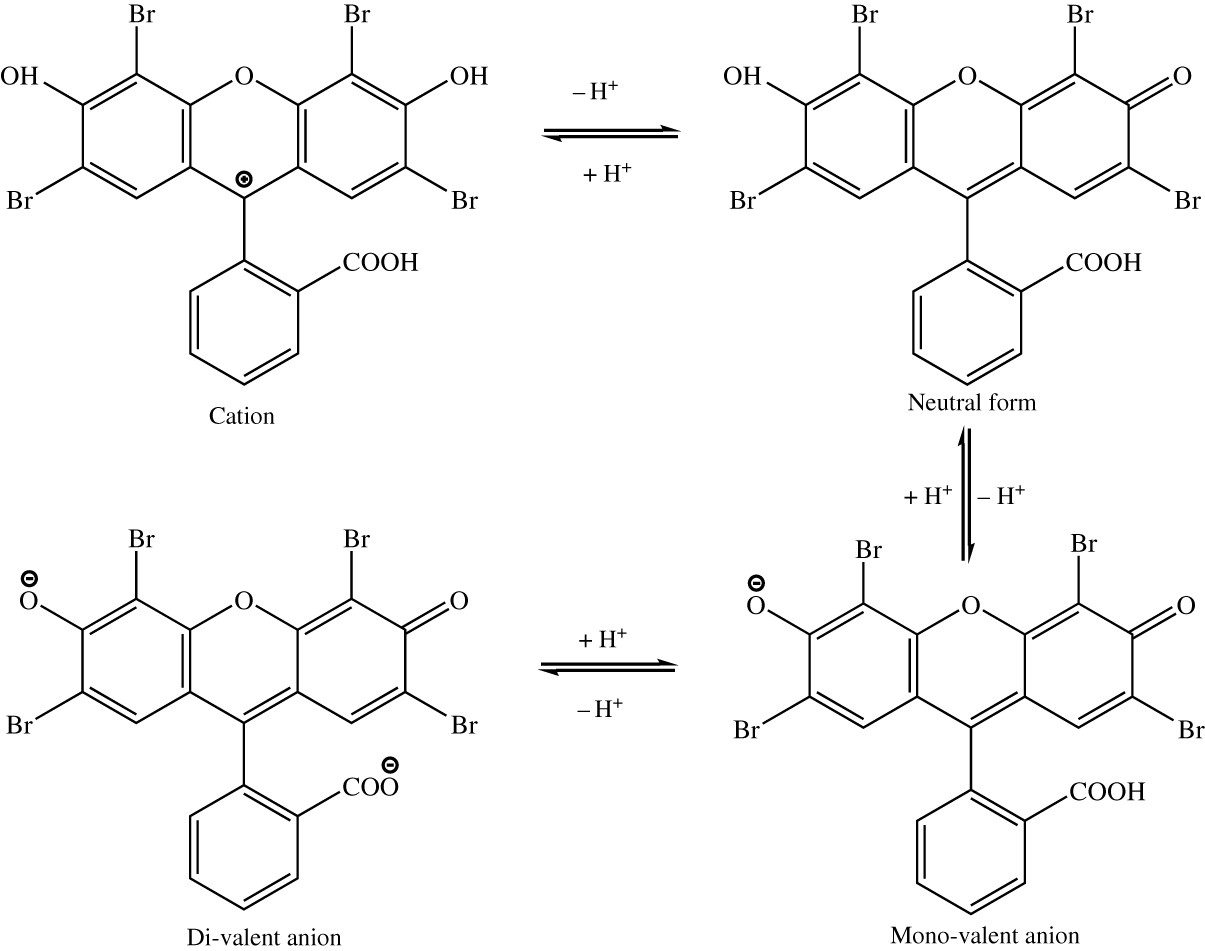
Protecting the past
Art conservation starts by finding out what the pigment actually is, what it can react with, and adjusting conditions accordingly to preserve it for as long as possible. Although repainting the art is unethical, the knowledge of different conditions on a pigment’s color over time makes digital conservation a possibility.
Because pigments can change and degrade so many different ways over time, researchers are looking into the best ways to protect pigments in museums’ storage and exhibits. For example, a recent study on the effects of various light sources on common pigments used in Chinese traditional paintings evaluated Raman spectroscopy’s potential as an analytical method (Dang et al., 2018). Raman spectroscopy is based on the principle of Raman scattering, wherein a small proportion of the photons that interact with a substance scatter inelastically. These inelastic collisions translate to Raman spectra, which collectively indicate a compound's structure and act as a fingerprint to help identify a substance.
By measuring intensity shifts within the Raman peaks before and after exposure to light sources, researchers could precisely evaluate changes in microscopic structure of the pigments. They determined that a RYGB-type white light-emitting diode (WLED) caused less damage than the more commonly used metal halide lamps or tungsten halogen lamps with infrared filter. This kind of research demonstrates how influential seemingly tiny changes in the exhibit can be on the longevity of an art piece.
Advancing technology also allows researchers to better categorize other factors that significantly affect pigment preservation, such as air quality inside museum exhibition cases and storage premises, relative humidity, temperature, pollutants, and volatile organic compounds present. By measuring and testing the effects of different combinations of factors on the various pigments present in a particular artwork, conditions can be optimized to preserve it for as long as possible.
For example, carbon-based black pigments are plagued by a variety of issues. They can react with the drying agent and the binder in their paints to form lead carboxylates, or degrade under exposure to light, or even burn at high temperature. Likewise, ocher compounds are sensitive to high temperatures, so they break down quickly when kept near heat sources like fireplaces. This also means they’re vulnerable to cleaning methods involving lasers or to spectroscopic analysis techniques like Raman.
Raman spectroscopy isn’t the only kind of analysis technique available to conservationists, and they use information gathered from many studies to verify composition and determine which method is least likely to damage the pigments. Additional methods for analyzing pigments include infrared and UV spectroscopy, X-ray diffraction (XRD), X-ray photoelectron spectroscopy (XPS), secondary-ion mass spectrometry (SIMS), and chemical analysis of tiny samples of the pigment in question.
Colors of the future
Scientists continue to find ways to make new and more extreme colors, pushing the limits of what is possible. In 2014, researchers at Surrey NanoSystems announced that they had created a new form of Vantablack, a material made of vertically aligned carbon nanotubes arrays. This new version of Vantablack absorbed up to 99.965% of visible light, setting a new record as the darkest substance on Earth.
However, by September of 2019, MIT engineers had already reported a new record. Although the new foil was made up of the same kind of nanotubes, it was synthesized differently, which allowed it to capture 99.995% of light. Thus, it was even darker than Vantablack. Naturally, artists are fascinated by the possibility of using such a striking color (or, perhaps more aptly, lack thereof), and artworks utilizing this new foil have already been created.
Such a dark substance also has applications in science and technology. A pigment that absorbs this much light can significantly reduce unwanted glare in space telescopes, allowing them to spot very distant exoplanets and dim stars with more accuracy than before (Chu, 2019).
Pigments have changed our world in many different ways, and they alter the way we perceive and interact with it. Artists and scientists alike have worked to isolate pigments from nature, and make new ones, for almost as long as humans have been around. In an effort to protect and remember where we have come from, preserving the pigments and the art they’re in has become an important field of research.
Sources
Chu, J. (2019). MIT engineers develop “blackest black” material to date. MIT News. Retrieved from http://news.mit.edu/2019/blackest-black-material-cnt-0913.
Coccato, A.; Moens, L.; Vandenabeele, P. (2017). On the stability of mediaeval inorganic pigments: a literature review of the effect of climate, material selection, biological activity, analysis and conservation treatments. Heritage Science, 5(12). Retrieved from https://doi.org/10.1186/s40494-017-0125-6.
Coldewey, D. (2014). Vantablack: U.K. Firm Shows Off 'World's Darkest Material.’ NBC News. Retrieved from www.nbcnews.com/science/science-news/vantablack-u-k-firm-shows-worlds-darkest-material-n155581.
Custer, L. W. (2007). Pigment Could Undo Pollock. The Harvard Crimson. Retrieved from www.thecrimson.com/article/2007/1/31/pigment-could-undo-pollock-a-sophisticated/.
Dang, R.; Tan, H. J.; Liu, G.; Wang, N.; Li, D. J.; Zhang, H. B. (2018). Influence of illumination on inorganic pigments used in Chinese traditional paintings based on Raman spectroscopy. Lighting Research & Technology, 51(3), 402-416. https://doi.org/10.1177/1477153518766972.
Everts, S. (2016). Van Gogh’s Fading Colors Inspire Scientific Inquiry. Chemical and Engineering News, 94(5), 32-33. cen.acs.org/articles/94/i5/Van-Goghs-Fading-Colors-Inspire.html.
Hossain, A.; Sadique Rayhan, A. B. M.; Raihan, J.; Nargis, A.; Ismail, I. M. I.; Habib, A.; Mahmood, A. J. (2016). Kinetics of Degradation of Eosin Y by One of the Advanced Oxidation Processes (AOPs) — Fenton’s Process. American Journal of Analytical Chemistry, 7(12). https://doi.org/10.4236/ajac.2016.712074.
Mettler Toledo. (n.d.). Raman Spectroscopy. Retrieved from www.mt.com/us/en/home/applications/L1_AutoChem_Applications/Raman-Spectroscopy.html.
Ouyang, A. (2016). The Science of Art: How scientists unmask fakes and forgeries. Yale Scientific. Retrieved from www.yalescientific.org/2016/05/the-science-of-art-how-scientists-unmask-fakes-and-forgeries/.
Rossotti, H. (1985). Colour: Why the World Isn't Grey. Princeton University Press. Scott, T. (2019, March 18). The Library of Rare Colors (Video file). Retrieved from https://www.youtube.com/watch?v=rApTzWboLrA.





